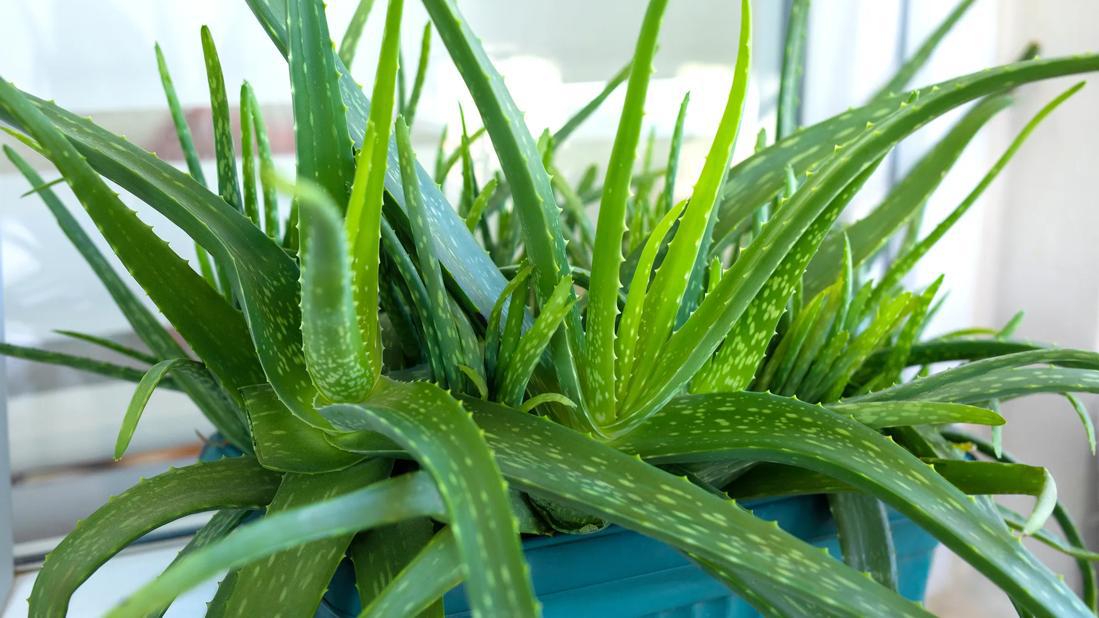Is Aloe Vera Good for Sunburn?
This cooling gel can help soothe sunburned skin, but it can’t cure the burn

When you’ve spent too much time in the sun, aloe vera may be the first thing you reach for — and you’re not alone. People have been using it for centuries to help calm irritated skin. And there’s something undeniably comforting about that cool, smooth gel on a red, hot, stinging skin.
You’ll often see aloe vera gel on store shelves right next to sunscreen. But is it more than just a cooling sensation? Can it actually heal your sunburn?
Not really, says dermatologist Lindsey Moore, MD.
Here’s what Dr. Moore wants you to know about aloe vera — and how to use it safely when your skin needs some TLC.
How aloe vera can help sunburned skin
Let’s make one thing clear: Aloe vera won’t reverse sun damage or make your sunburn disappear overnight.
But it can help you feel better while your skin recovers. It’s not a cure, but Dr. Moore shares how it may help in a few key ways:
- It’s packed with antioxidants, like vitamins C and E that may reduce skin stress.
- It has anti-inflammatory properties, which can ease redness and swelling.
- It’s rich in water and acts as a hydrating moisturizer, which may help limit how much your skin peels.
“Aloe can soothe irritated skin and make you feel more comfortable,” she adds. “But it won’t undo the effects of UV damage.”
In fact, multiple studies have found that aloe vera is no more effective than a placebo when it comes to treating sunburn.
Still, that calming feeling is real — and for many people, that’s reason enough to use it.
How to use it
If you decide to use aloe vera for your sunburn, here’s how to get the most relief:
- Apply a thick layer of gel gently over the burned skin.
- Don’t rub it too hard — let the gel sit on top to create a soothing layer.
- Reapply throughout the day as needed, especially if your sunburned skin feels dry, hot or itchy.
- For extra relief, store your aloe vera in the fridge. The chilled gel can feel even more soothing on inflamed skin.
Does it matter what type?
“Whether it’s straight from the plant or from a bottle, both can work,” says Dr. Moore. The key is using something that’s available, gentle and non-irritating.
Here are your main options:
- Fresh aloe gel from the plant:Got an aloe plant at home? Just cut off a leaf, slice it open and scoop out the clear gel inside. Apply it directly to your skin.
- Store-bought gel:No plant? No problem. Look for 100% aloe vera gel if you can — the simpler, the better. Skip anything with fragrances, dyes or alcohol, which can irritate already-sensitive skin.
- Aloe lotion:These can be fine for daily moisturizing, but they’re not the best choice for sunburn. Many contain added ingredients that may dry out or sting sunburned skin. One study even found that aloe lotions are less effective than aloe gels for sunburn relief.
Skip the aloe if you’ve had a bad reaction — like a rash — before. And always read labels if you have allergies or sensitive skin.
When to skip aloe and seek care
Sometimes, a sunburn is more than just a little red skin. Aloe may help with mild sunburns, but more serious burns need medical attention.
Skip the aloe and contact a healthcare provider if you have:
- Blisters that are large, painful or leaking pus
- Severe swelling
- Chills or a fever of more than 102 degrees Fahrenheit (39 degrees Celsius)
- Signs of dehydration, like dizziness, dry mouth, extreme thirst, fatigue and peeing less
- Sunburn on a baby younger than 1 year old
Sunburn recovery takes time
Aloe vera won’t heal a sunburn, but it can make it more bearable. Just think of it as a soothing sidekick, not a miracle cure.
Dr. Moore emphasizes that time is the only true healer when it comes to sunburn. That’s why she spends a lot of focus talking about sun protection — not just treatment.
She recommends:
- Wearing sunscreen with SPF 30 or higher every day (even when it’s cloudy)
- Reapplying sunscreen every 90 minutes, especially if you’re sweating or swimming
- Wearing UPF sun-protective clothing, hats and sunglasses when you’re outside
“Prevention is really the best treatment,” Dr. Moore emphasizes. “It’s much easier to protect your skin than it is to repair it.”
Next time you head outdoors, don’t forget your sunscreen — because when it comes to sunburn, prevention really is your best bet.